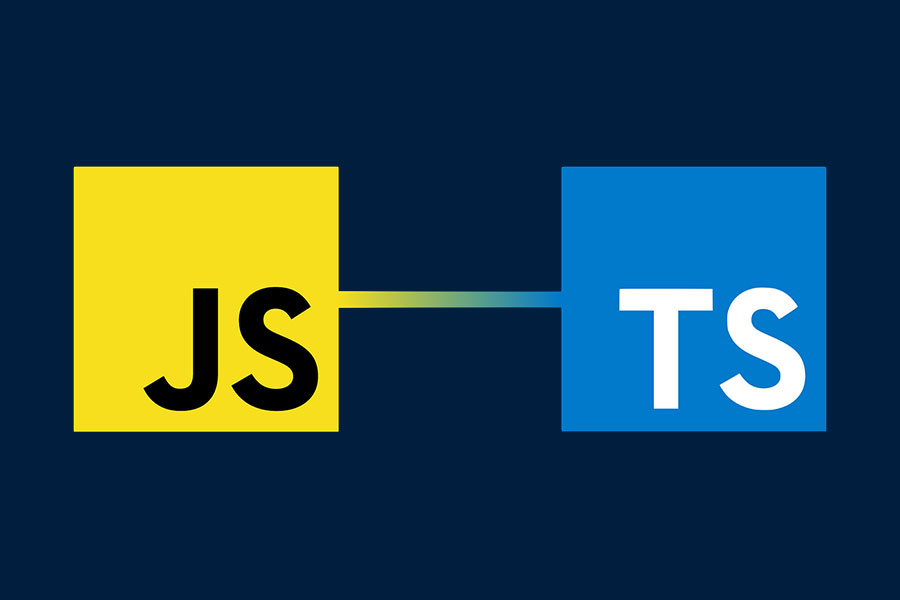As the web development landscape continues to evolve, a pressing question arises: Is TypeScript the right choice for full-stack application development?
Choosing the right technology stack is crucial for the success of modern web applications. With the rise of complex and scalable applications, developers are continually seeking tools that can enhance productivity and code maintainability.
TypeScript has gained significant traction in recent years, offering a statically typed alternative to JavaScript that promises to reduce runtime errors and improve code readability. But is it the right time to make the switch to TypeScript for full-stack development?
TypeScript and Its Relationship to JavaScript
TypeScript, a superset of JavaScript, has been gaining traction, but what does this mean for full-stack development? As developers increasingly adopt TypeScript for its potential to improve code maintainability and reduce runtime errors, understanding its relationship with JavaScript is crucial.
What Is TypeScript and How It Extend JavaScript
TypeScript is designed to address the limitations of JavaScript, particularly in large-scale applications. By introducing static typing to JavaScript, TypeScript enables developers to identify and correct errors early, thereby improving code maintainability. This extension of JavaScript means that any valid JavaScript code is also valid TypeScript code, making it easier for developers to migrate existing projects.
The Evolution of TypeScript in Modern Web Development
Since its introduction by Microsoft in 2012, TypeScript has undergone significant evolution. Its adoption has been driven by the growing complexity of web applications and the need for more robust tooling. Today, TypeScript is widely used in modern web development, particularly in frameworks such as Angular, React, and Vue.
Key Differences Between TypeScript and JavaScript
The primary difference between TypeScript and JavaScript lies in their typing systems. JavaScript is dynamically typed, which can lead to runtime errors if not properly managed. In contrast, TypeScript’s static typing helps prevent such errors by checking types at compile time. This fundamental difference impacts how developers work with the two languages, with TypeScript offering more safeguards for large and complex codebases.
Should You Switch from JavaScript to TypeScript for Full Stack Apps?
Deciding whether to switch from JavaScript to TypeScript for full-stack applications depends on several key factors. As developers weigh the benefits and challenges, understanding the specific needs of their project is crucial.
Evaluating Your Current Project Needs
Before making the switch, it’s essential to assess your project’s current requirements. Consider whether your project involves complex data types, large-scale data processing, or intricate logic that could benefit from TypeScript’s static typing. Projects with a high degree of complexity or those that require robust maintainability may find TypeScript particularly advantageous.
Team Experience and Learning Curve Considerations
The decision to adopt TypeScript also hinges on your team’s experience and the potential learning curve. Teams already familiar with JavaScript will find that TypeScript builds upon their existing knowledge, but they will still need to invest time in learning TypeScript-specific features. The learning curve can be mitigated with comprehensive training and resources.
Project Scale and Complexity Factors
The scale and complexity of your project are significant factors in deciding whether to switch to TypeScript. Larger projects or those with multiple interconnected components can significantly benefit from TypeScript’s ability to enforce type safety and improve code readability. For smaller projects, the benefits may be less pronounced, but adopting TypeScript can still contribute to better code quality and maintainability.
In conclusion, switching from JavaScript to TypeScript for full-stack applications should be based on a thorough evaluation of your project’s needs, your team’s capabilities, and the project’s scale and complexity. By carefully considering these factors, developers can make informed decisions that align with their project’s goals and requirements.
Benefits of TypeScript in Full Stack Development
Adopting TypeScript for full-stack development can significantly enhance the overall quality and maintainability of your codebase. As applications become increasingly complex, the need for robust, scalable, and maintainable code becomes increasingly important.
- Enhanced Code Quality Through Static Typing: TypeScript’s static typing is a key feature that improves code quality by catching errors at compile time rather than runtime. This leads to fewer runtime errors and makes the codebase more maintainable. By defining types for variables, function parameters, and return types, developers can ensure that their code is more predictable and more manageable to understand.
- Improved Developer Experience and Tooling: TypeScript enhances the developer experience by providing better code completion, type checking, and code refactoring capabilities. Integrated development environments (IDEs) and editors like Visual Studio Code offer robust support for TypeScript, making it easier for developers to navigate and maintain large codebases.
- Better Scalability for Large Codebases: As applications scale, TypeScript’s type system helps manage complexity by providing a clear understanding of the codebase, facilitating a more organized and coherent development process. This is particularly beneficial for large teams and complex applications, where maintaining code quality and consistency can be challenging.
- Type Consistency Across Frontend and Backend: TypeScript enables type consistency across both frontend and backend code, ensuring that data types are consistent throughout the application. This consistency reduces the likelihood of type-related errors when data is exchanged between the frontend and backend, leading to a more robust and reliable application.
By leveraging the benefits of TypeScript, developers can create more maintainable, scalable, and efficient full-stack applications. As the development landscape continues to evolve, adopting TypeScript can be a strategic move towards improving overall development processes and application quality.
Common JavaScript Typing Issues Solved by TypeScript
TypeScript has emerged as a robust solution to the typing issues that have long plagued JavaScript developers. JavaScript’s dynamic typing, while flexible, often leads to errors that only become apparent at runtime. TypeScript addresses this challenge by introducing optional static typing, which helps catch errors early in the development process.
- Runtime Type Errors and How TypeScript Prevents Them: Runtime type errors occur when the data type of a variable is not what the code expects it to be. TypeScript prevents these errors by allowing developers to define types for variables, function parameters, and return types. This way, TypeScript can detect type inconsistencies during compilation, thereby reducing the likelihood of runtime errors.
- Object Property Access Safety: In JavaScript, accessing properties of an object that don’t exist can lead to null pointer exceptions or undefined errors. TypeScript enhances object property access safety by enabling developers to define interfaces or types for objects. This ensures that the properties being accessed are valid, thus preventing potential errors.
- Function Parameter Validation: JavaScript functions can be called with any number of arguments, regardless of the function’s definition. TypeScript allows developers to specify the types and number of parameters a function expects, ensuring that function calls are valid and reducing the chance of errors due to incorrect parameter passing.
- Refactoring Confidence and Code Navigation: TypeScript’s type information not only helps in catching errors but also improves the overall development experience. With TypeScript, developers can refactor code with greater confidence, as the type system ensures consistency across the codebase. Additionally, TypeScript’s type information enhances code navigation, making it easier for developers to understand complex codebases.
Implementing TypeScript in Full-Stack Environments
Implementing TypeScript in full-stack environments is becoming increasingly popular due to its benefits in code consistency and developer productivity. As full stack developers look to enhance the maintainability and scalability of their applications, TypeScript offers a robust solution.
TypeScript with Node.js for Backend Development
TypeScript’s integration with Node.js for backend development brings significant advantages, including enhanced code completion and type checking. This combination enables developers to identify errors early and to improve code readability, facilitating the management of complex server-side logic.
To get started with TypeScript and Node.js, developers can leverage the TypeScript compiler and Node.js type definitions. This setup enables the use of TypeScript’s advanced features, such as interfaces and generics, to build robust backend services.
TypeScript with React, Angular, and Vue for Frontend
On the frontend, TypeScript can be seamlessly integrated with popular frameworks like React, Angular, and Vue. For instance, React developers can use TypeScript to define component props and state types, enhancing code maintainability and reducing runtime errors.
Angular, being built with TypeScript, naturally supports its features, allowing for robust application development. Vue also supports TypeScript, providing a more structured approach to building user interfaces.
Setting Up a TypeScript Full-Stack Project
Setting up a TypeScript full-stack project involves configuring both frontend and backend environments. This includes installing necessary dependencies, such as the TypeScript compiler and relevant type definitions.
Configuration Best Practices
Best practices for configuring TypeScript include setting appropriate compiler options, such as enabling strict type checking and generating source maps. This ensures that the development environment is both efficient and error-free.
Managing Types Across the Stack
Managing types across the full-stack is crucial for maintaining consistency. Using shared type definitions between the frontend and backend can help achieve this, reducing the likelihood of type-related errors.
Migration Strategies for Existing Projects
For existing projects, migrating to TypeScript can be done incrementally. Starting with critical components and gradually adding type annotations can make the transition smoother.
Real-World Success Stories and Use Cases
Several high-profile projects have successfully adopted TypeScript, showcasing its benefits in real-world scenarios. These case studies demonstrate how TypeScript can improve code quality and developer productivity in complex applications.
Conclusion: Making the Right Decision for Your Development Needs
Deciding whether to switch to TypeScript for full-stack applications depends on several factors, including project complexity, team experience, and development goals. TypeScript offers numerous benefits, such as enhanced code quality through static typing, improved developer experience, and better scalability for large codebases.
When evaluating TypeScript vs JavaScript, it’s essential to consider the trade-offs between the two. While JavaScript is a versatile and widely used language, TypeScript’s type consistency across frontend and backend can significantly reduce runtime errors and improve maintainability.
To determine whether you should switch to TypeScript for full-stack apps, assess your project’s specific needs and weigh the advantages of TypeScript against your current development workflow. By doing so, you can make an informed decision that aligns with your development goals and enhances your overall development experience.
Ultimately, the benefits of TypeScript, including improved code quality and reduced type-related errors, make it a compelling choice for complex full-stack applications. As the development landscape continues to evolve, adopting TypeScript can be a strategic move to future-proof your projects and stay competitive.








